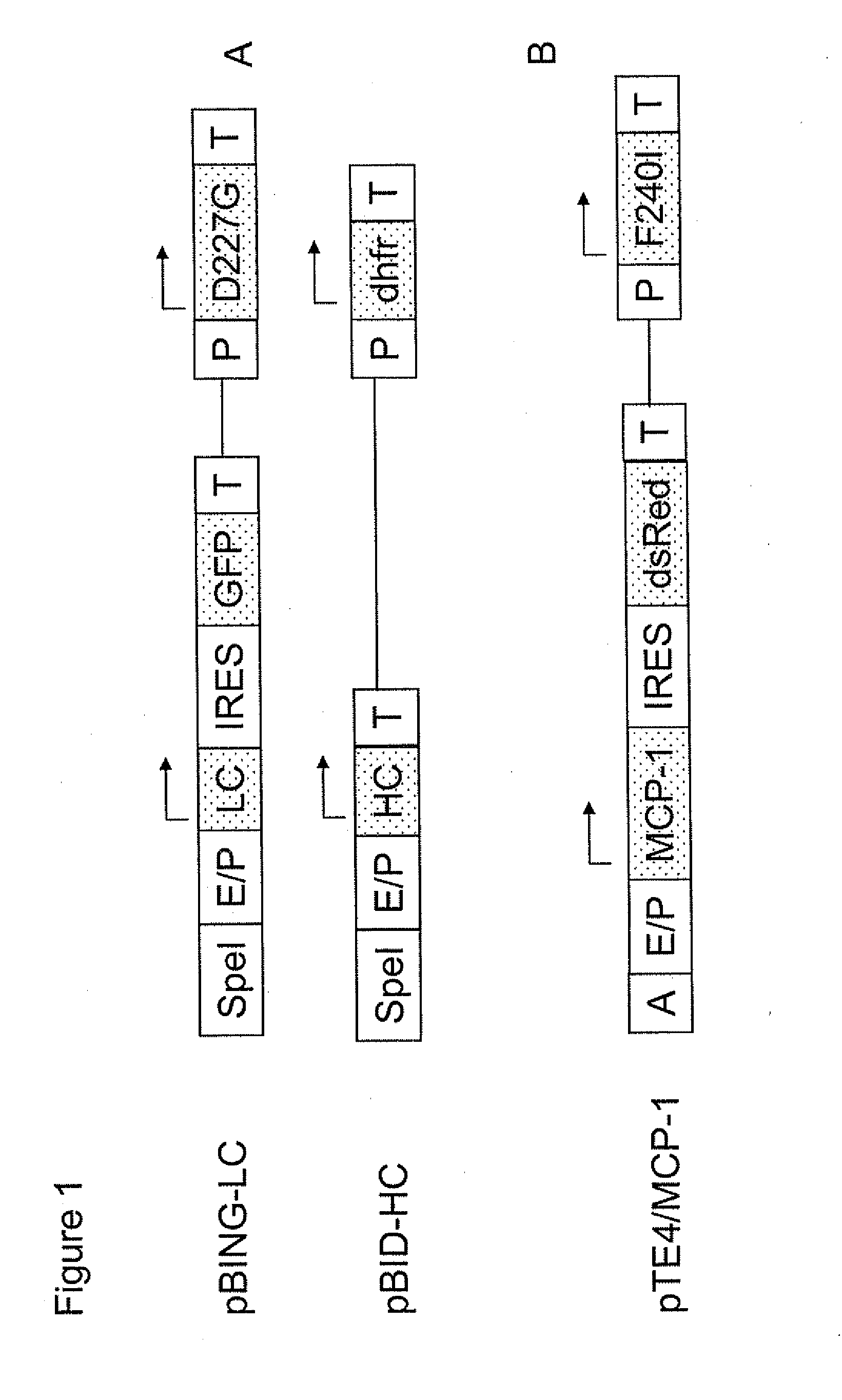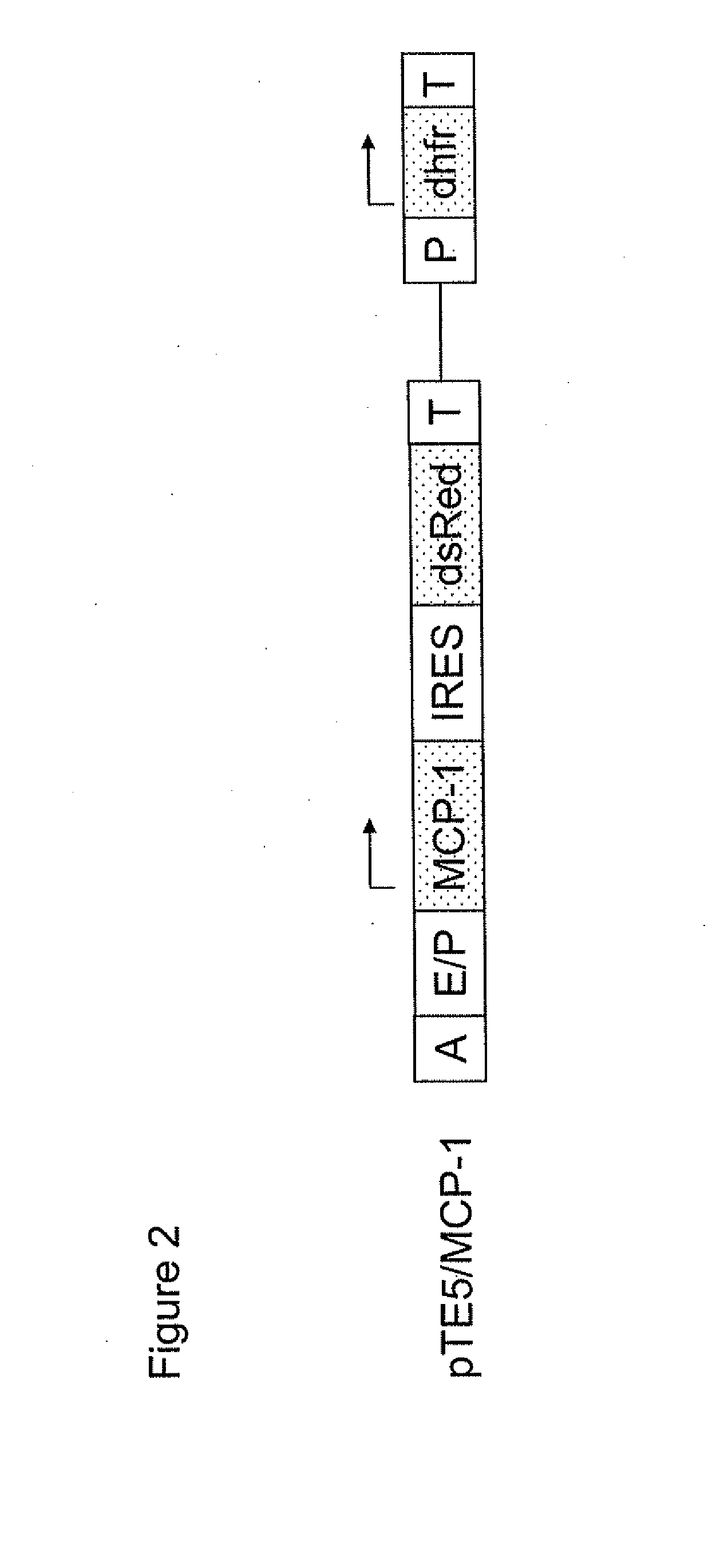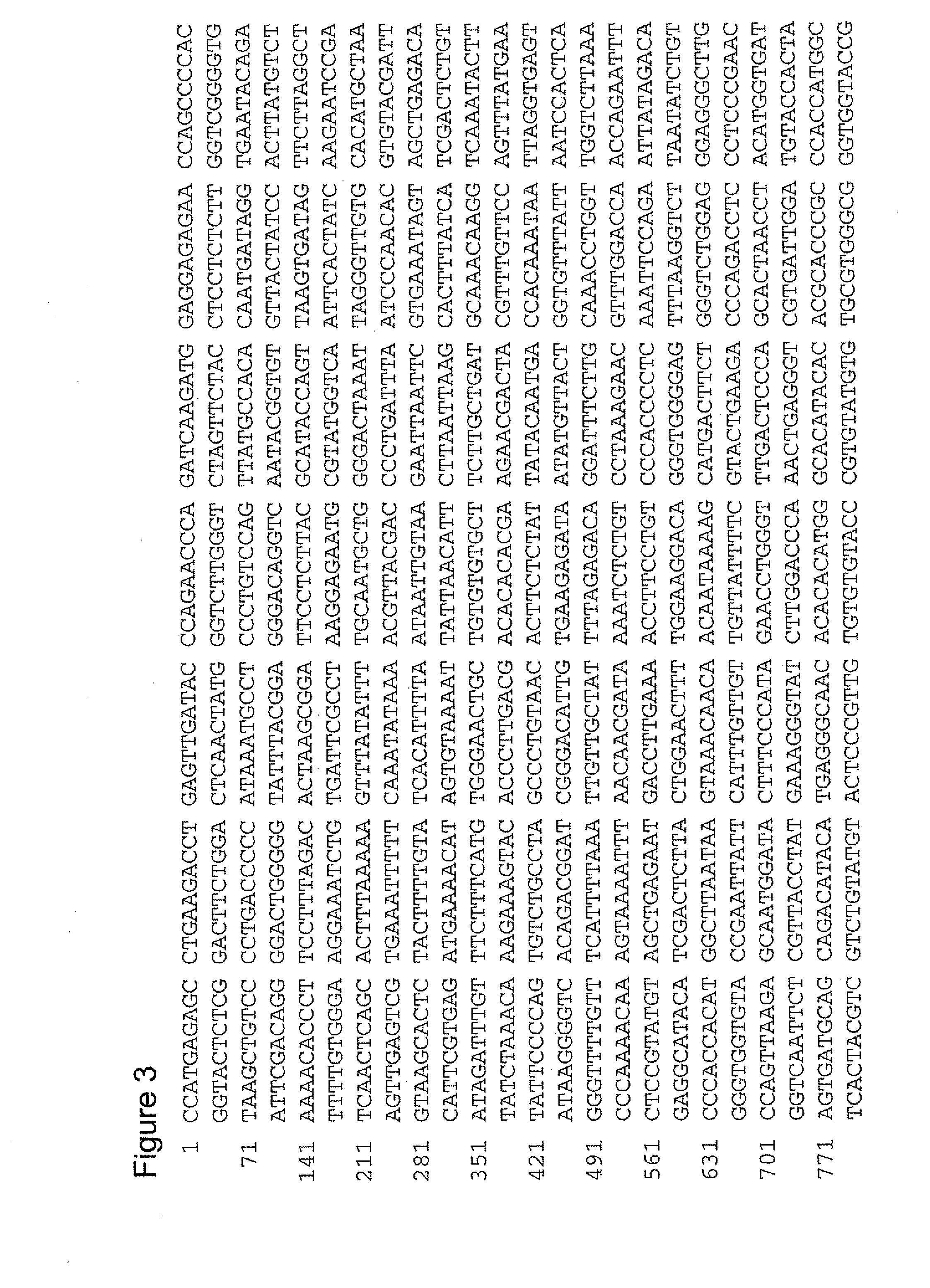Regulatory nucleic acid elements
a technology of nucleic acid elements and regulatory nucleic acid, which is applied in the field of cisactive nucleic acid sequences, can solve the problems that no increase in productivity can be achieved by introducing te elements, and achieve the effects of reducing the number of high-producing transfection batches, increasing the transcription or expression of genes, and canceling out chromosomal positional effects
- Summary
- Abstract
- Description
- Claims
- Application Information
AI Technical Summary
Benefits of technology
Problems solved by technology
Method used
Image
Examples
example 1
Isolation and cloning of the TE element TE-A
[0284]Starting from the sequence from the hamster genome described in WO97 / 15664, which comprises, in addition to the coding region for the ubiquitin / S27a gene, adjacent 5′UTR regions including the Ub / S27a-promoter, hitherto unknown sequence regions were isolated further upstream. For this, adapter-ligated genomic CHO-DG44 DNA was used as the matrix for “nested PCRs”. The first PCR was carried out with a combination of primers with complementarity to the adapter or to a hamster sequence in the 5′ region of the sequence listed in WO97 / 15664 under SEQ ID No. 5 (primer Ub20: 5′-CTCCACACATTTACACATGGACAC-3′ (SEQ ID No. 39)); corresponds to nucleotides 62 to 85 (complementary sequence) of SEQ ID No. 5 from WO 97 / 15664). Then a second PCR was carried out with a second primer combination, consisting of an inner adapter primer and an inner (“nested”) hamster-specific primer (primer Ub21: 5′-GGGTTTCTCTGTGTAATAGCCATG-3′(SEQ ID No. 40); corresponds to...
example 2
Generation of Diverse TE Expression Vectors
[0288]Starting from the 3.8 kb TE-element TE-A (FIG. 3, Sequence ID No. 1) from the CHO genome various fragments were produced by PCR which had deletions at either the 5′- or 3′-end, compared with the TE element TE-A (FIG. 4 and FIG. 5). To synthesise these fragments combinations of direct and one reverse primer were used (FIG. 5 and FIG. 6). For cloning purposes a BamHI cutting site was attached at the 5′-end of the fragment and a BsrGI cutting site was attached at the 3′-end of the fragment by the primers. In this way 12 TE-elements of different lengths designated TE-01 to TE-12 were generated (FIGS. 4 and 5). After digestion with BsrGI and BamHI these were cloned in direct orientation into the adapter region of the base plasmids pTE4 / MCP-1 (FIG. 1B) or pTE5 / MCP-1 (FIG. 2). The fragment TE-00 (SEQ ID No. 2) was isolated from a subclone of TE-A by SacII-restriction enzyme digestion and cloned into the base vectors pBING-LC (FIG. 1A) or pBI...
example 3
Influence of the TE Element Variant TE-00 on the Expression of GFP and Immunoglobulin G1 (IgG1)
[0290]The effect of the TE element TE-00 on the expression of the cytoplasmically located GFPs (green fluorescent protein) and a secreted monoclonal IgG1-antibody was investigated in two independent stable transfection series with CHO-DG44 cells. For this, CHO-DG44 cells were co-transfected with the following plasmid combinations or plasmid variants:
control plasmids pBING-LC (FIG. 1A) and pBID-HC (FIG. 1A) without TE element
pBING-LC and pBID-HC with a TE element TE-00 integrated upstream from the promoter / enhancer in direct orientation
pBING-LC and pBID-HC with a TE element TE-00 integrated upstream from the promoter / enhancer in reverse orientation
[0291]In transfection series A four pools were produced, in transfection series B ten pools were produced per variant. Equimolar amounts of the two plasmids were used. In order to arrive at the same total number of molecules, the total amount of D...
PUM
| Property | Measurement | Unit |
|---|---|---|
| concentrations | aaaaa | aaaaa |
| volume | aaaaa | aaaaa |
| concentrations | aaaaa | aaaaa |
Abstract
Description
Claims
Application Information
 Login to View More
Login to View More - R&D
- Intellectual Property
- Life Sciences
- Materials
- Tech Scout
- Unparalleled Data Quality
- Higher Quality Content
- 60% Fewer Hallucinations
Browse by: Latest US Patents, China's latest patents, Technical Efficacy Thesaurus, Application Domain, Technology Topic, Popular Technical Reports.
© 2025 PatSnap. All rights reserved.Legal|Privacy policy|Modern Slavery Act Transparency Statement|Sitemap|About US| Contact US: help@patsnap.com



